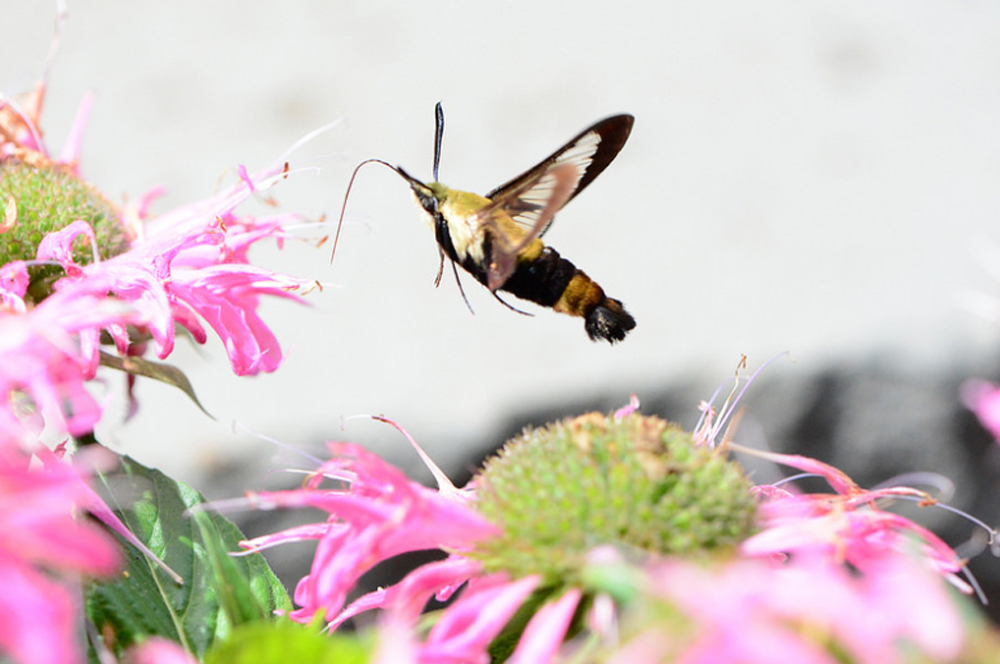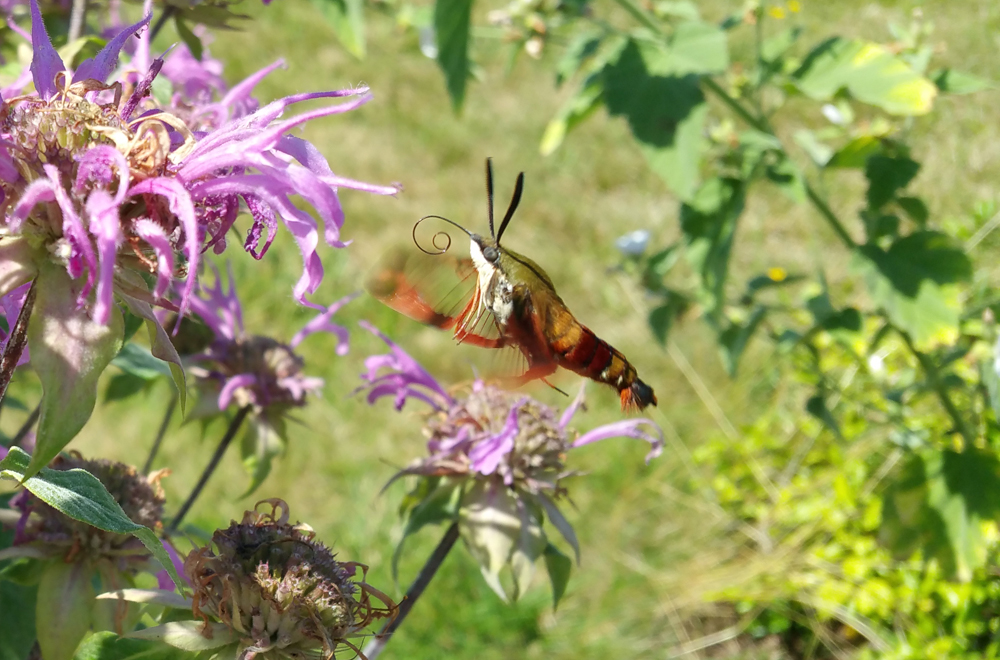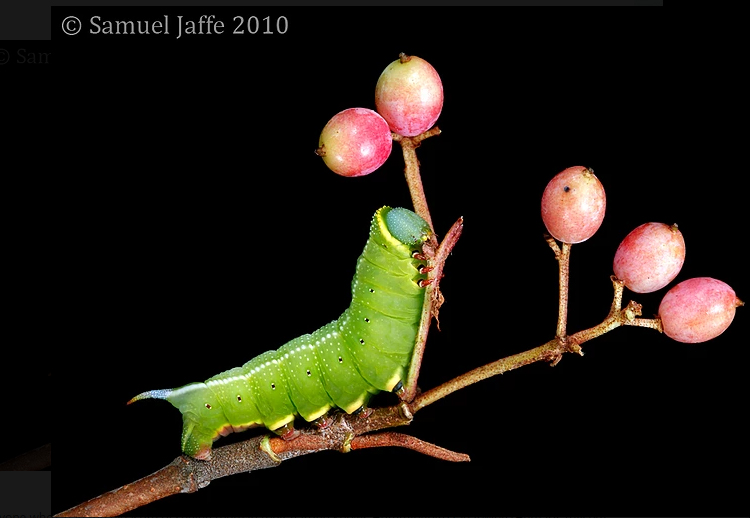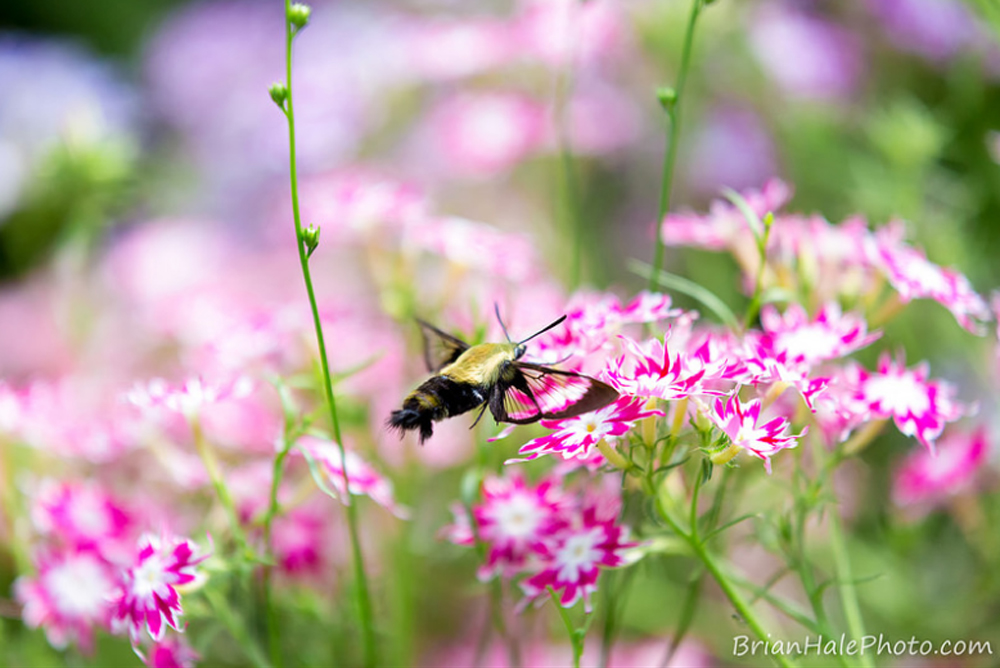
David Julian image shared with New England Botanic Garden at Tower Hill’s flickr group.
Robert Burgess
New England Botanic Garden at Tower Hill staff
One thing about gardeners, they are keen observers of nature. The more you garden, the more in tune you seem to become to the earth’s cycles, patterns, and connections.
I’ve only been gardening for about a decade, so there is still so much for me to learn, including that a hummingbird moth is not some mystical creature from a Tolkien novel.
A few summers ago, I overheard someone at New England Botanic Garden at Tower Hill say they had recently seen a hummingbird moth. “A what moth?” I thought to myself.
In recent years, I had come to realize, thanks in part to the fantastic educators at New England Botanic Garden at Tower Hill, that if you want hummingbirds to come to your yard – and I did and do because they are amazing – that I’d have to plant hummingbird-friendly plants in my yard. And if I wanted to help pollinators, I should plant more pollinator friendly plants in my garden. I added a little of this (fox glove) and a little of that (gladiolus) each year to attract interesting and beneficial organisms to my yard.
Lo and behold, shortly after eavesdropping on this hummingbird moth conversation, I spotted a most beautiful and odd creature on my bee balm. I grabbed a few pictures and later confirmed: It was a hummingbird moth!
Hummingbird moth on Robert’s bee balm.
The USDA gives us the lowdown…
Perhaps one of the most delightful insect visitors to your garden is the hummingbird moth. Several species of the genus Hemaris deserve this name and for very good reason. They fly and move just like hummingbirds. Like them, they can remain suspended in the air in front of a flower while they unfurl their long tongues and insert them in flowers to sip their nectar. They even emit an audible hum like hummingbirds. Quite often inexperienced garden visitors notice what they think is a tiny hummingbird fleeting among flowers such as bee balm (Monarda). They listen incredulously when one explains to them that what they just saw was not a bird but a moth.
Our friends at Mass Audubon explain that while hummingbird moth caterpillars look a bit like tomato/tobacco hornworms, they are different and feed on different plants.
A hummingbird moth/clearwing caterpillar at the Caterpillar Lab on a viburnum (not tomato) plant.
Then a funny thing happened. After nearly four decades of never noticing hummingbird moths before, they kept popping up. One flew by me in the garden section of a big box store. Another hovered by while waiting in a line of parents to pick up my kids from summer camp. Then images of these interesting insects started appearing on New England Botanic Garden at Tower Hill’s social media feeds, as visitors spotted them around the gardens.
New England Botanic Garden at Tower Hill member Brian Hale captured this image in the gardens.
Then I passed a group of Master Gardeners working a booth at New England Botanic Garden at Tower Hill and talking about hummingbird moths (Would I make decent spy, or am I just nosy?). I stopped to share my excitement like a kid who just discovered chocolate, and learned that one of the three had never seen one before. I like to think shortly thereafter they began appearing for him all over the place, as they did for me.
That summer feels a little like the movie Hook, starring Robin Williams, where his character Peter Pan had to use his imagination before he could see the food at the dinner table. Once I imagined that there could be a moth that acted like a hummingbird, they became real to me and I saw them.
I asked Ann Marie Pilch, a longtime gardener and former New England Botanic Garden at Tower Hill colleague, if hummingbird moths had just arrived at New England Botanic Garden at Tower Hill. No, she said with a laugh, they’ve always been there. You just have to know what your looking at when you see one. And then – like magic – they’re everywhere.
Robert Burgess is public relations manager at New England Botanic Garden at Tower Hill.



